Many successful marketing teams use content brainstorming to generate ideas on what to create.
In this guide, we’ll share the tips and techniques you can use to run brainstorming sessions effectively.
But let’s cover the basics first.
What Is Brainstorming?
Brainstorming is when a group of people share spontaneous ideas as proposed solutions to a problem. It’s a process designed to encourage creativity and collaboration.
For example, in a content brainstorm, participants might verbally share blog post ideas while one person writes them down on a whiteboard.
Generally, the goal is to generate as many ideas as possible. And refine them later.
So, participants are encouraged to share whatever comes to mind. And avoid passing judgment on other people’s ideas.
What Is Content Brainstorming?
Content brainstorming is brainstorming to come up with content ideas—i.e., concepts for blog posts, videos, infographics, and other types of content.
It can be an efficient way to produce unique, diverse, and plentiful ideas for a content calendar.
Because it:
- Gathers ideas from multiple people
- Allows people to iterate on others’ ideas
- Liberates participants from fear of judgment
And the more content ideas you have, the easier it will be to find ones that work for your content marketing strategy.
9 Content Brainstorming Ideas
Experiment with these contentbrainstormingideas to see what works best for your team:
1. Use Semrush’s Topic Research Tool
With Semrush’s Topic Research tool, you can find popular and trending subtopics in your niche. Which make great launchpads for your content brainstorm.
Enter a main topic to base your search around.
Then, choose your country and click “Get content ideas.”

The tool will present a variety of subtopic ideas.
Which you can sort by:
- Volume: The average number of times the subtopic is Googled each month
- Difficulty: How hard it will be to rank highly for the subtopic in Google, expressed as a percentage called “Keyword difficulty”
- Topic Efficiency: A measure of the subtopic’s overall SEO potential, based on the subtopic’s volume and difficulty
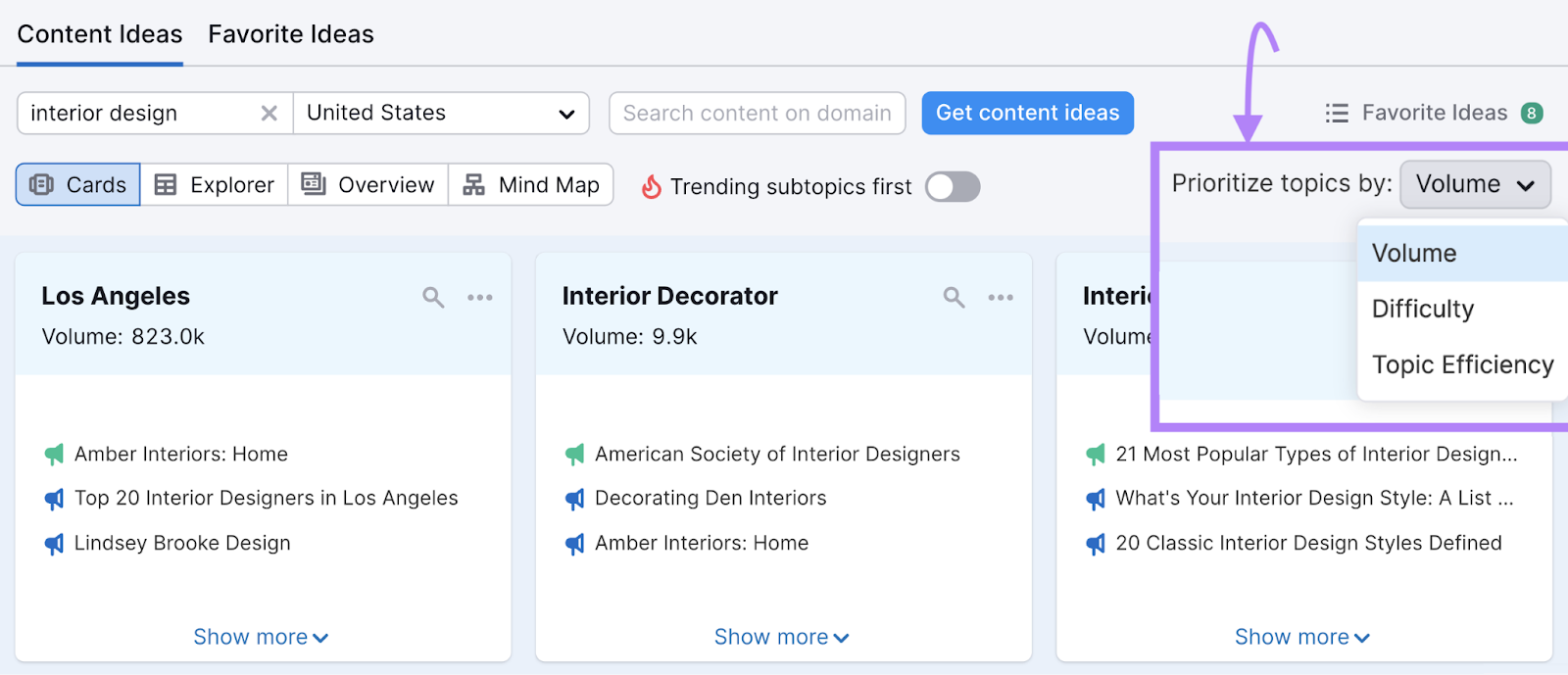
Switch the toggle to focus on trending subtopics, which are marked with a flame icon.
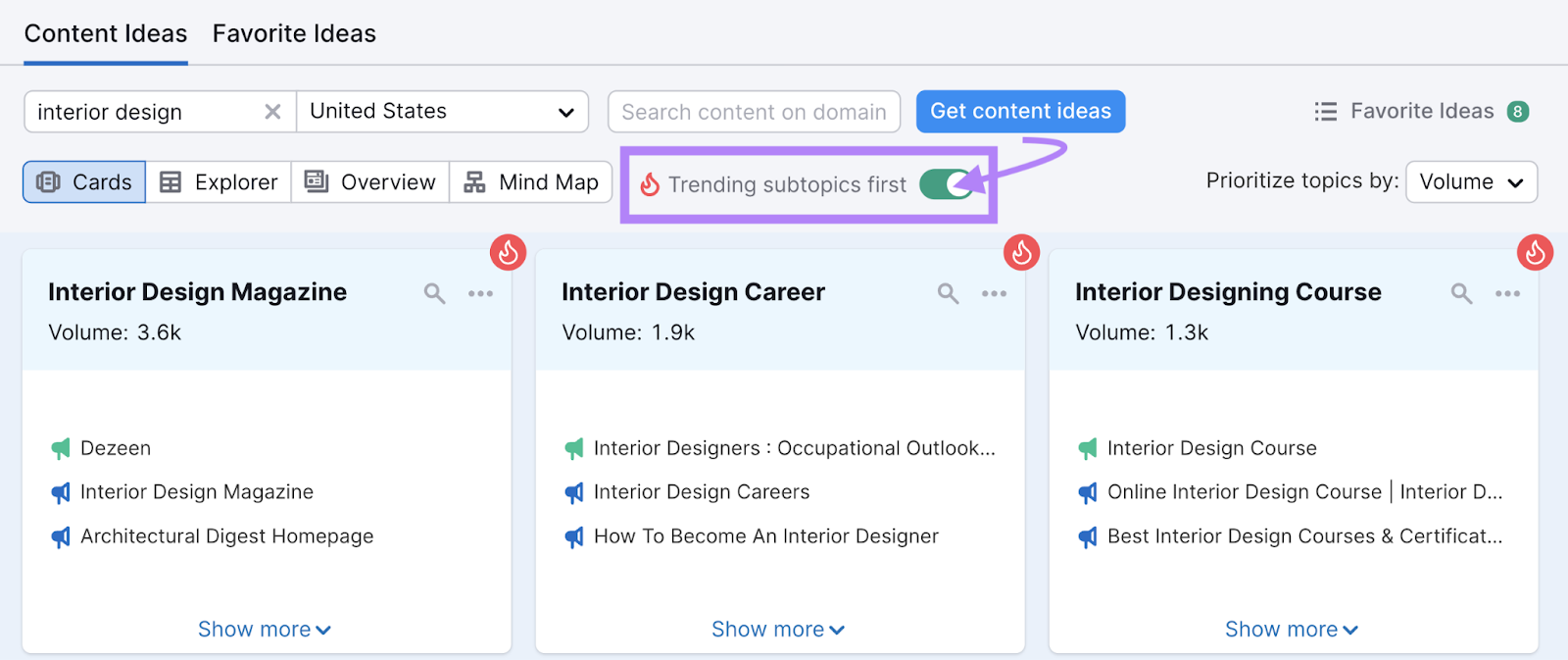
If you need more inspiration, click “Show more” on any subtopic.
You’ll see:
- Headlines: The top 10 headlines for the main keyword, prioritized by which ones have the most backlinks (links from other sites)
- Questions: A list of related questions that you might want to answer in your content
- Related searches: Some associated search queries that show up on Google
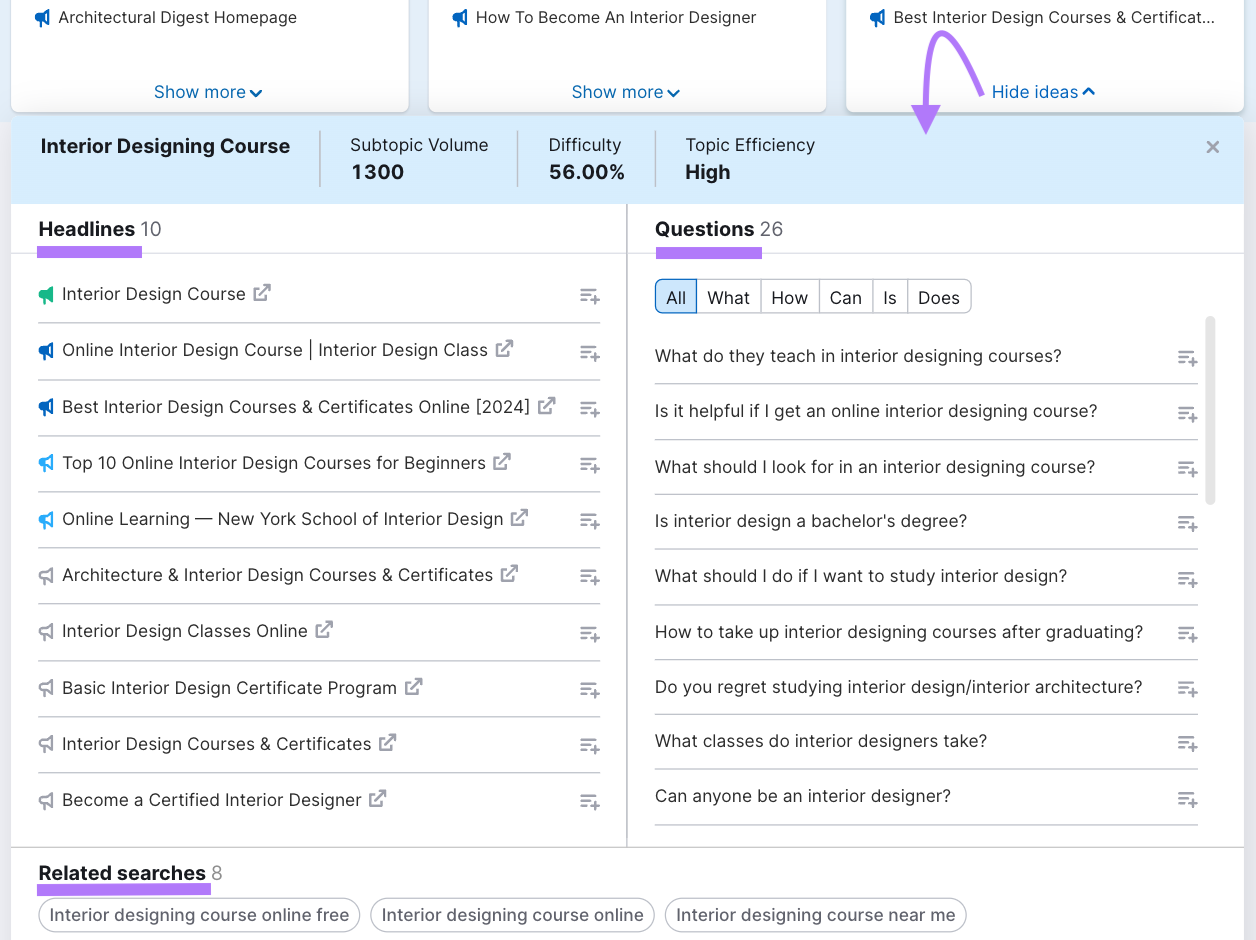
2. Create a Mind Map
A mind map is a visual representation of connected ideas.
Here’s an example of what a mind map can look like (this one is from within Keyword Manager and based on related keywords):
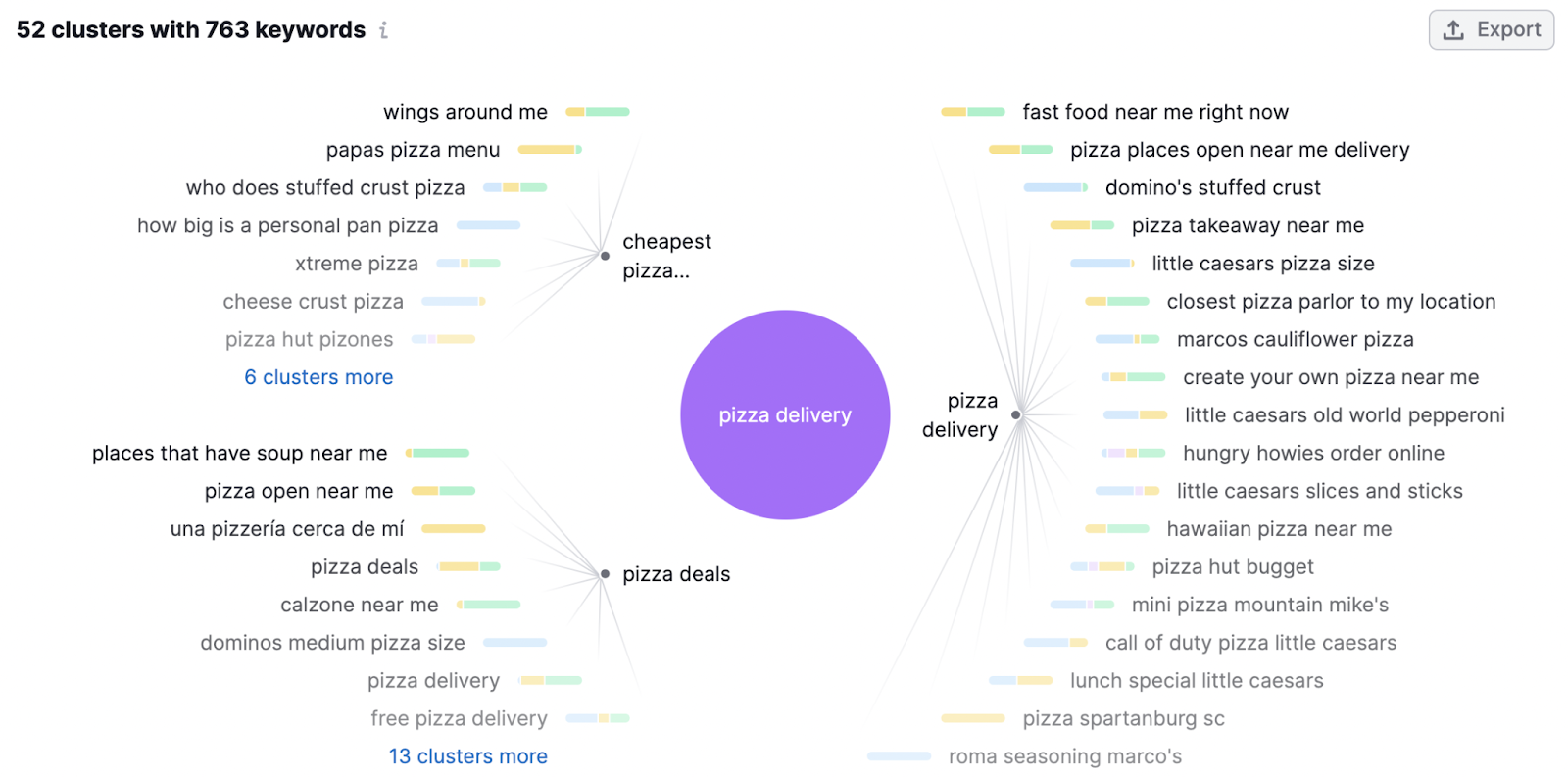
You start in the center with your main topic. Then, branch off into related subtopics and keep branching off until you have your final ideas.
This process allows you to build ideas one step at a time.
You can do mind mapping with a pen and paper. But we recommend using a tool like Miro. To make it easy to collaborate and create more complex diagrams.
3. Curate and Reference a Swipe File
A swipe file is a collection of content you can get inspiration from.
For example, you might jot down catchy headlines to use as ****** you want to emulate. Or bookmark blog posts that cover topics you want to write about.
No matter how or where you store it, keep your inspirational content organized so it’s easy to browse through when you’re brainstorming topics.
Pocket is a great tool for saving articles, because you can add tags and highlight key passages.
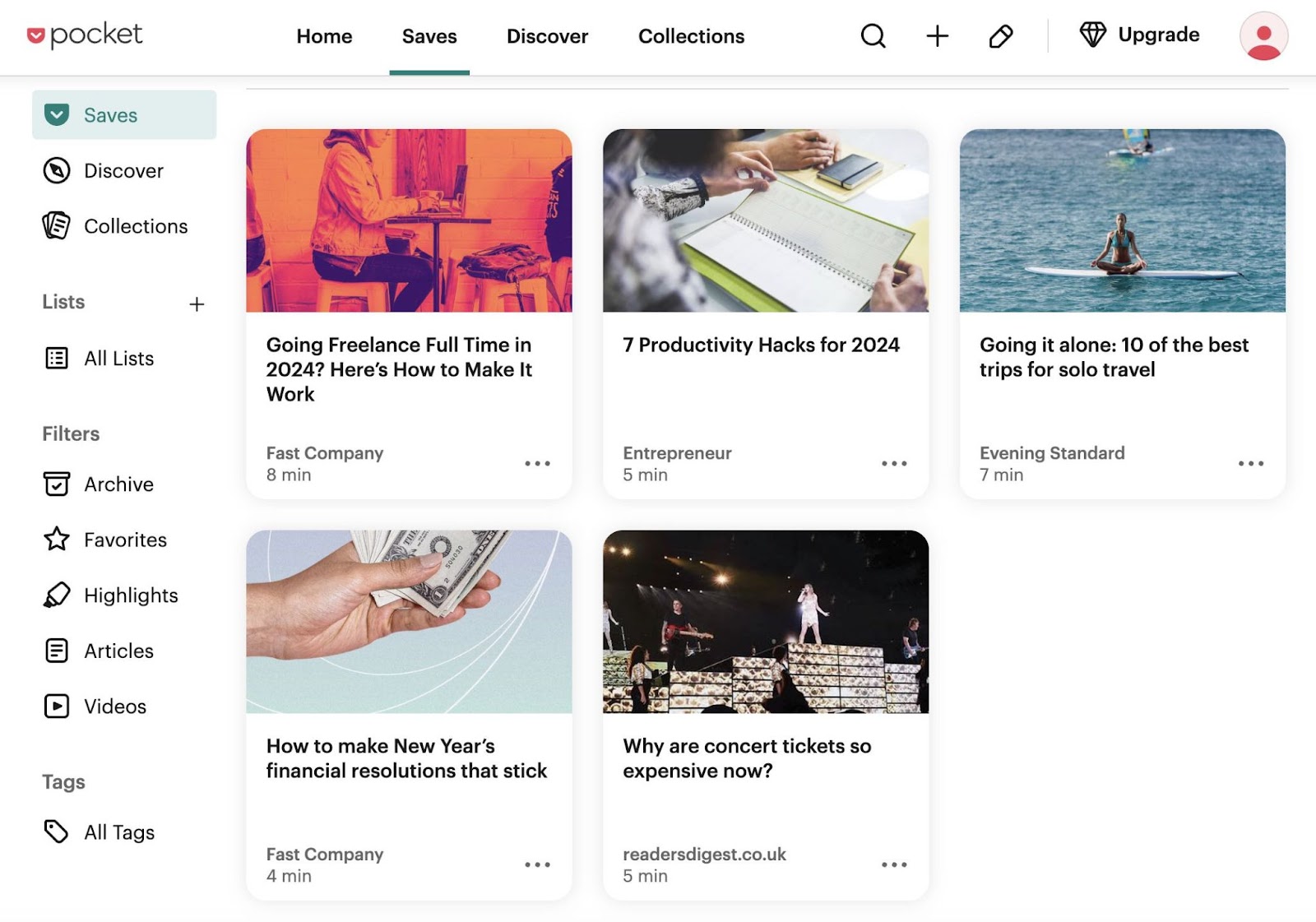
Note that a swipe file is often curated naturally over time. As you spot great content in your day-to-day life.
But you can seek out inspiration purposefully. We’ll explain how in the next section.
4. Seek Out Great Content Examples
Looking at content marketing examples is one of the best ways to get inspiration during a brainstorm.
Search for useful ideas and roundups on Google. With queries like this:
- “[your niche] content examples”
- “[your topic] content ideas”
- “[content format] marketing examples”
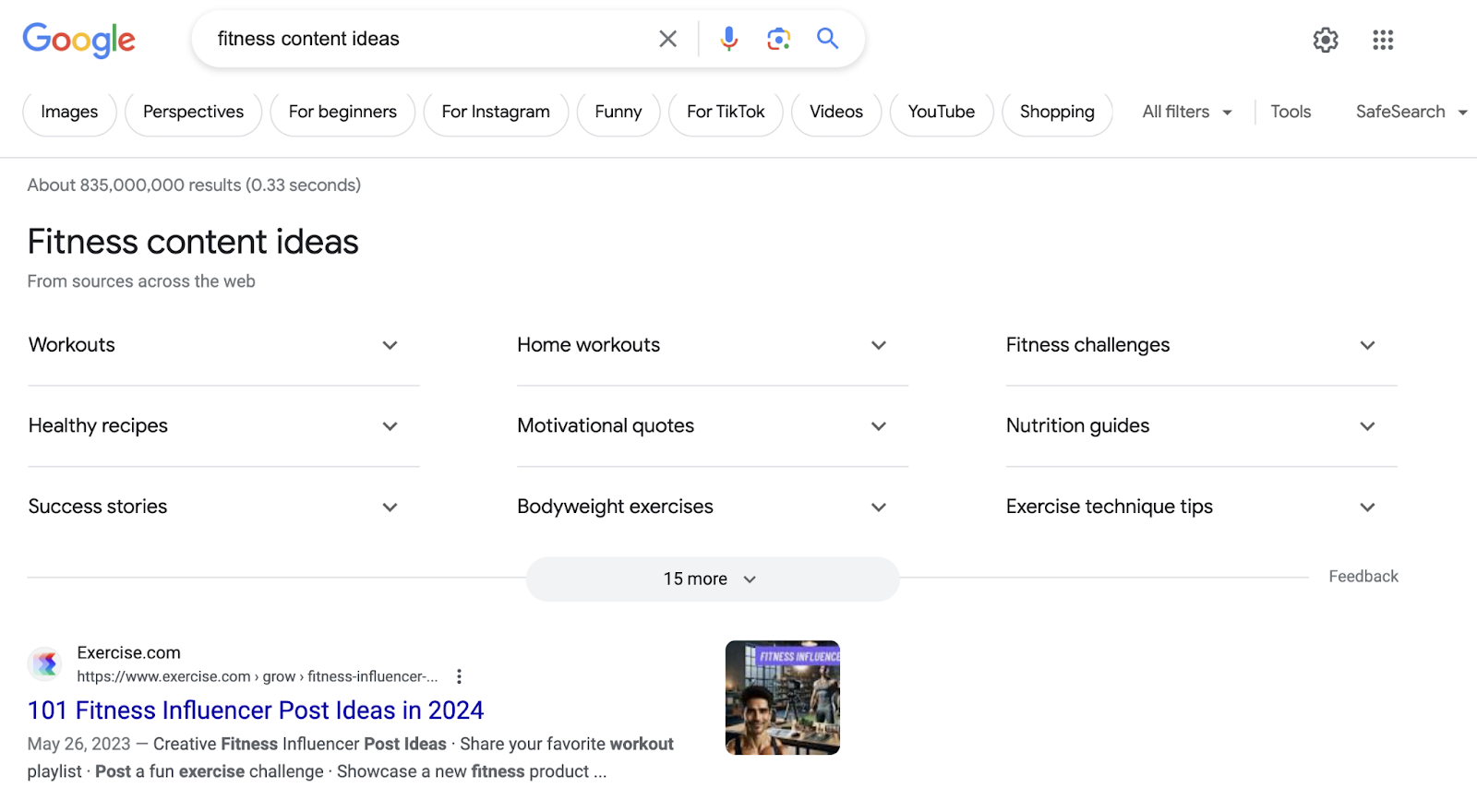
You can also get inspiration from:
- Case studies on agency and awards websites (e.g., The Drum Awards)
- Online design portfolios (e.g., samples shared on Behance and Dribbble)
- Blogs and social media profiles in your niche (e.g., a competitor’s Instagram account)
5. Ask Your Audience for Ideas
You want to give your target audience what they want—so why not ask them for ideas?
Just add a message asking readers what they’d like to see from you to your social media platforms or email newsletter.
Like podcaster Natalie Brunell did here:

Then, browse through the suggestions during your content brainstorm.
6. Perform Keyword Research
Keyword research is the process of finding what your target audience searches for using Google (or other search engines).
This is particularly helpful if you’re brainstorming ideas to support your search engine optimization (SEO) strategy. Because it tells you what content in your niche is in demand.
To get started, go to Semrush’s Keyword Magic Tool.
Enter a term to base your research around, then choose your country and click “Search.”

The tool will provide a list of “Broad Match” keywords that contain your starting term(s) or a close variation.
In the “Volume” column, you’ll see how many searches each keyword typically gets each month.

We recommend that you filter for keywords with informational search intent.
These are queries that people use to find information. So, they’re good for prompting content ideas.
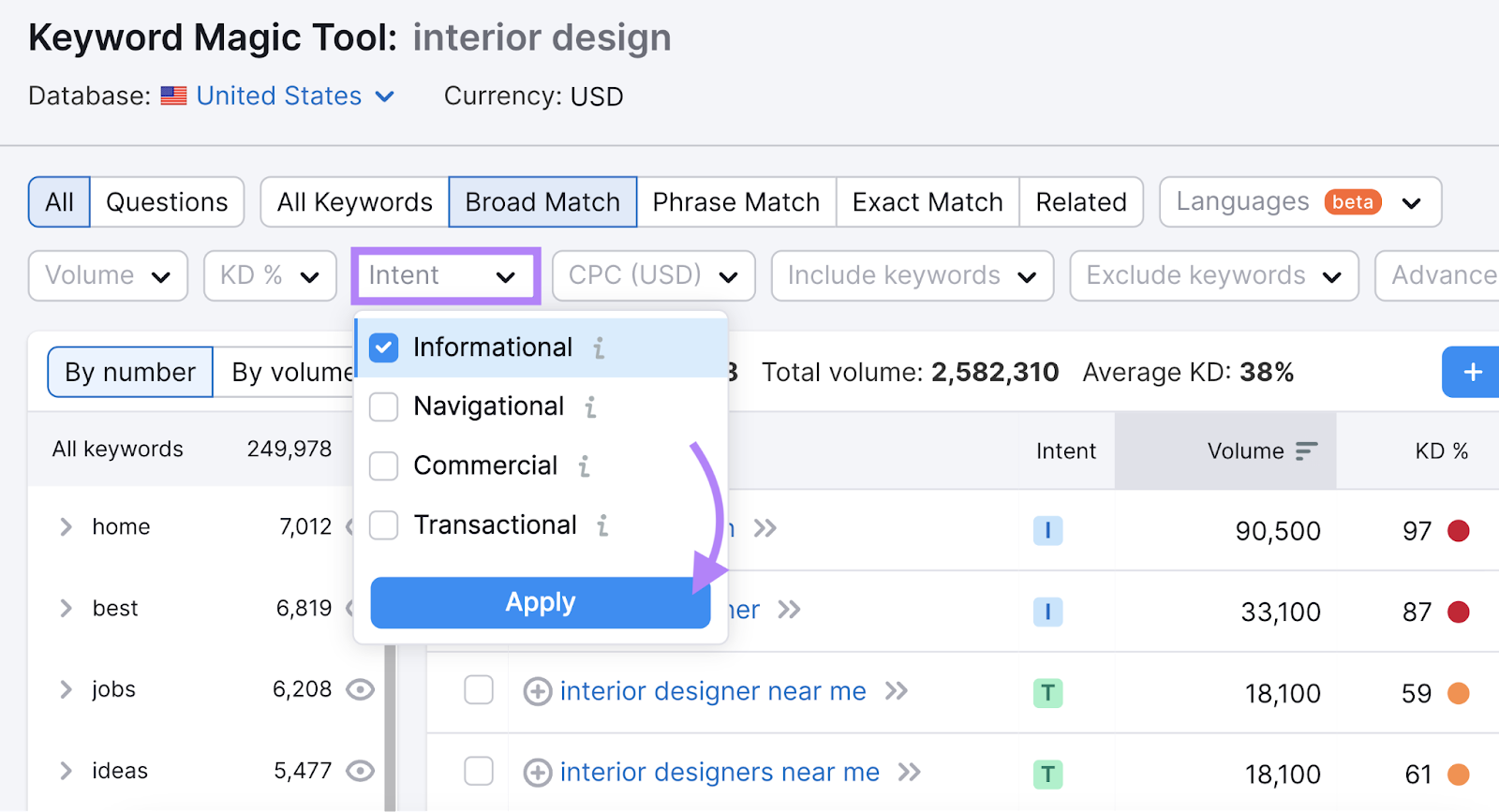
7. Try the 6-3-5 Method
The 6-3-5 method is a brainstorming technique that involves six participants. But it can be adapted for other group sizes.
Here’s how it works:
Each participant receives a piece of paper (or online document) with a challenge at the top—e.g., “Come up with video ideas related to remote working.” And they get five minutes to silently add three ideas.
Participants then swap sheets and add three more ideas. And repeat until they’ve contributed to every challenge.
It’ll take just over half an hour to generate 108 ideas (six participants x three ideas x six rounds). At the end, you can discuss your results and gather any extra ideas.
This method allows everyone in the group to contribute and build on each other’s ideas. While providing space for independent thought.
8. Prompt Ideas with Random Words
Use a random word generator tool to give you words or phrases to use as prompts. Then, challenge your team to brainstorm content ideas or headlines around them.
This is a great way to inspire out-of-the-box thinking. And while you might not use all the initial ideas, they can spark interesting thoughts and discussions.
For example, here are three randomly generated words and content ideas they inspired:
- Regret: Why You Won’t Regret Going Freelance: 5 Parents Share Their Stories
- Common: The Common Denominators of Successful Remote Teams
- Hold: How to Put Work on Hold When You Have a Home Office
9. Adapt Ideas with the SCAMPER Framework
SCAMPER is a set of techniques for generating new ideas from existing ideas.
So, it can help you put a new twist on an existing piece of content. Or extract more value from ideas you’ve already brainstormed.
Let’s break the acronym down:
|
S |
Substitute |
Replace an element of the original idea with something else |
|
C |
Combine |
Merge the idea with another idea |
|
A |
Adapt |
Change the idea to suit a new audience or format |
|
M |
Magnify or minify |
Put more or less emphasis on a particular part of the idea |
|
P |
Put to another use |
Think of ways to repurpose the idea |
|
E |
Eliminate |
Refine the idea by removing an element |
|
R |
Rearrange or reverse |
Approach the idea from another perspective |
Let’s say we have a productivity guide for remote workers.
We could:
- Substitute the existing stock images with original infographics
- Combine the article with a weekly email newsletter that delivers bite-sized productivity hacks
- Adapt the article to focus specifically on remote workers with young children
- Magnify the human aspect of the article by incorporating success stories
- Put it to another use by repurposing it into a downloadable ebook
- Eliminate commonplace advice to create a guide that focuses on novel tips
- Reverse the idea by sharing productivity myths rather than productivity hacks
Best Practices for Content Brainstorming
To get the most out of your content brainstorming session, follow these best practices:
Create Effective Prompts to Guide Your Efforts
First, you need to define the goal of your brainstorming session. You can then create one or more prompts to direct participants’ thinking.
Avoid vague prompts like the one below. These can cause participants to become overwhelmed and unfocused.
❌ Brainstorm content ideas
Equally, avoid being too specific. Prompts like this can stifle creativity:
❌ Brainstorm infographic ideas that discuss the ergonomic benefits of adjustable office chairs with lumbar support, targeted specifically at freelance graphic designers working in home offices
Instead, try to land somewhere in the middle. Only introduce constraints if they’re necessary for the goal. Or to give your participants some direction.
For example, it’s helpful to focus on the relevant platform(s) if you’re doing social media brainstorming.
✅ Brainstorm video ideas that will allow us to engage freelancers on TikTok
Set Ground Rules
In addition to sharing the goal with participants, make it clear what’s expected of them during the brainstorming session.
Here are some rules you might want to adopt:
- Share any ideas that come to mind, even if they seem outlandish or impractical
- Avoid evaluating or critiquing other people’s ideas
- Use other people’s ideas to spark your own creativity
- Avoid distractions (e.g., keep laptops closed)
It’s also best to establish a time constraint for each brainstorming session or activity.
Try working in five-minute bursts with short breaks in between. This should help your participants stay focused.
Start with an Ice-Breaker Activity
Ice-breaker activities can help participants feel more comfortable before the brainstorming process begins. Especially if they’re working with an unfamiliar group of people.
These activities can also get participants into a creative mindset.
For example, you could:
- Play a trivia quiz on Sporcle
- Watch and discussing a relevant video
- Take turns adding sentences to build a story
Practice Effective Record-Keeping
Visibly record ideas during the content brainstorming session so participants can use them to spark ideas of their own. And so they’re not forgotten later.
You could ask one person to take notes. But they might struggle to capture everything discussed. And get little opportunity to contribute their thoughts.
Instead, ask everyone to jot down their own ideas:
- If you’re brainstorming in person, you could use sticky notes and post them on the wall
- If you’re brainstorming online, you can use a cloud-based document or digital whiteboard
But let participants know that you’ll polish the notes later.
That way, everyone can focus on thinking. Rather than note-keeping.
Try Different Brainstorming Techniques
Experiment with some of the different brainstorming techniques we mentioned to see what works best for your team.
While some marketers prefer a traditional approach, others will benefit from using certain tools and structures.
Plus, different ideation methods keep things fresh. And encourage participants to think in new ways. So, they’re great for sparking creativity.
What to Do After Brainstorming
Once your content brainstorm is complete, compile your team’s notes in a single document.
You can then start to polish and prioritize content ideas. Considering factors like:
- SEO potential: How many people are searching for this topic and how high might you rank in search results?
- Target audience: Does the topic align with your target audience’s needs and preferences?
- Resources: Do you have the skills, tools, and time required to create the content?
- Marketing goals: How much will this content support sales, lead generation, etc.?
- Relevance: Does the topic align with your brand identity? And is it relevant right now?
To streamline the process, collect content ideas and data with Semrush’s Topic Research tool.
This post was updated in 2024. Excerpts from the original article by James Brockbank may remain.
Source link : Semrush.com
